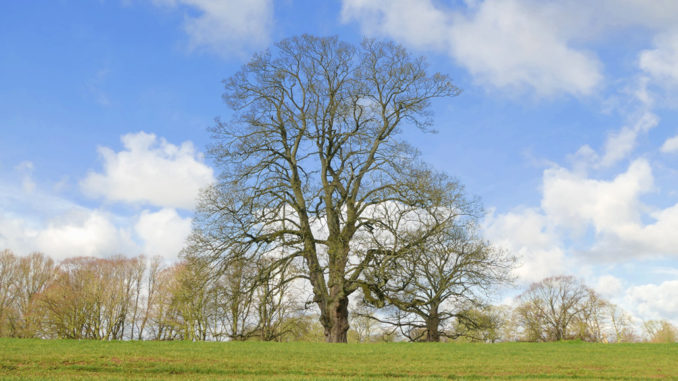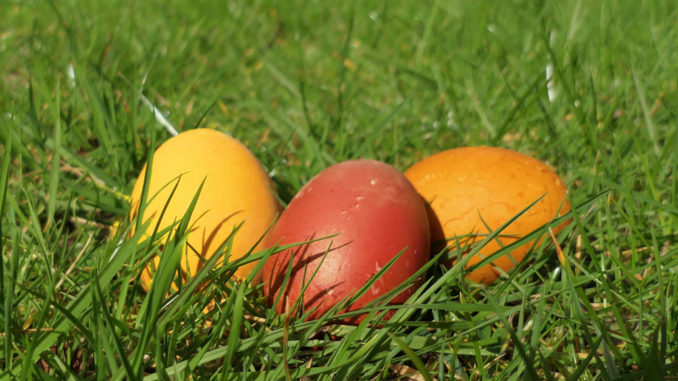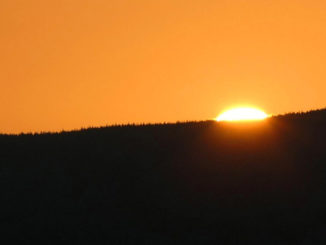
© DMG 2021
Ēostre
My earliest memories of this time of year involve decorating eggs, going to the local park, and rolling them down a hill. Well, more of a small embankment than a hill, but the thought was there, and we went through the ritual regardless.
I was also taught at school that rolling an egg was supposed to represent the rolling away of the stone which was the door to Jesus’s tomb, but that always struck me as a very odd and rather tenuous connection. Why an egg? Why not a big stone? And why even bother painting the egg in the first place? And what did rabbits have to do with any of this?
Like many of these festivals the timing of it simply marks an observation of the solar year. The spring equinox marks the height of the battle between the winter darkness and summer light. The days start to become longer than the nights, and it is a celebration of fertility, rebirth, and regeneration. Also attributed to pre-Christian spring celebrations across Europe are freshly cut flowers (presumably to brighten up the home with dashes of colour after the grim winter months) and buns decorated with crosses. Much like the Brigid’s cross of Imbolc—representing the four seasons or elements—the cross on spring buns is said to be additionally linked with the four quarters of the moon. But where did it start?
Going right back as early as we can with ‘local’ sources, the first written mention of a Spring celebration is Ēostre, from the cleric known as the Venerable Bede in De Temporum Rationae in the 600s. He mentions a month referred to as ‘Ēosturmonath’ which was named after the established Anglo-Saxon goddess Ēostre. In Bede’s time, this was being translated as ‘Paschal month’, but the locals were still holding feasts in honour of Ēostre, and stubbornly sticking with her old name. These celebrations are said to include feasts held around the first full moon after the equinox, and bonfires.
There might not be any specific written records of Ēostre as being a fertility and rebirth Goddess, but seeing as how those are the central features of the celebrations around the equinox, it would be very odd indeed if Ēostre was remembered while a different deity that represented the core aspects of the season was forgotten.
It is probably that Ēostre herself came to us from the Germanic tribes. The ‘original’ version of Ēostre now goes by the name ‘Ostara’, but the first mention of this name is relatively very recent, and we’ve got Jacob Grimm to thank for this, in his Deutsche Mythologie, of 1835. Jacob and his brother are best known for collecting and publishing folk tales, but Jacob was also a linguist. Using Bede’s work as a starting point, he worked backwards to propose that the goddess whom Bede called Ēostre would have been known as Ostara in Old High German. It’s untrue to suggest that Jacob invented Ostara, but rather he reverse-engineered what was known about her to arrive at a linguistically and historically plausible name.
He concluded that Ostara, like the Anglo-Saxon Ēostre was the higher being which was so firmly rooted in the ancients’ beliefs that the Christian teachers just went with it, and she eventually became what is known as Easter.

© DMG 2021
The Germanic root of Ostara means “to shine,” and evokes the rays of light at dawn. It is perfectly natural why that was used to name the goddess who ushered in the dawn of a new season, and why Jacob Grimm described her as, “the divinity of the radiant dawn, upspringing light, a spectacle that brings joy and blessing.”
Some traditions maintain that she is honoured by worship facing east, to observe the dawn on the equinox. I’m minded to believe this, based purely on the most common insult levelled at ‘pagans’ being that they worship the sun.
One school of thought ties in the root of Ēostre with the Greek words Oestrus and Estrus, from which numerous modern-day words are derived linked to female fertility.
Another name often linked to the equinox is Ishtar. The short version of this Babylonian myth sees Nimrod marrying his own mother, Semiramis. He becomes King, which makes his wife and mother a very powerful Queen. She claimed that she came from the stars, before ascending in a giant egg which fell back to Earth into the Euphrates River. Semiramis became known as Ishtar, and legend has it that this egg falls every year during the first full moon after the equinox, before Ishtar bursts out of it, symbolising birth. Whoever finds her egg had blessings bestowed upon them.
An almost identical version of this story was recorded by an Egyptian librarian in Rome, who wrote, “An egg of a wondrous site is said to have fallen from heaven into the river Euphrates. The fishes rolled it to the bank, where the doves having settled upon it, and hatched it, out came Venus, who afterwards was called the Syrian goddess (Astarte).”
There is no known direct connection between the Babylonian Ishtar or the Greek Astarte and our Ēostre—linguistic experts are confident that the similarity of their names is coincidental—but it is interesting that Ishtar is also associated with the hare, and the tale includes the date of a celebration determined by the first full moon following the equinox, and eggs. It can’t be ruled out that whatever link there once might have been has simply been lost in the mists of time.
And why eggs? Well, the simplest explanation is that with spring being a period of rebirth, eggs are a glaringly obvious symbol of new life. A more logistical suggestion which has been put forward is that spring was when it became worthwhile for our ancestors to start foraging for colourful birds’ eggs, and so the idea of a seasonal egg-hunt could be as simple as ‘something fresh for the menu.’ Regardless, it would be rather odd if celebrations didn’t involve eggs. There are a few interesting tales that crop up though.
A Germanic folktale sees Ēostre travelling through a forest and comes upon a dying bird, suffering from hunger and the cold. She turns it into a hare so it will have warm fur and can find food easier than a bird can during winter. Thanks to this, the hare survived and when spring came, it discovered that because it had once been a bird, it still laid eggs. To show its gratitude to Ēostre, the hare decorated the eggs.
Another tale, linked to Anglo-Saxon folklore, has a bird which could lay beautifully coloured eggs. Ēostre was irked by how proud this bird was, so she turned it into a hare, but she was so moved by the creature’s despair she allowed it to lay beautiful eggs once a year.
These might seem to be bizarre tales, but like all myths, there could just be a kernel of truth in them.
Hares are nocturnal, but they will be spotted during spring days when they are mating, and they certainly are prolific breeders at this time of the year.
They birth their leverets on the ground in what is known as a ‘form’, which is a small nest dug into the ground. After the hares abandon these, it is not uncommon for them to be taken over and used by a range of birds such as plovers, pheasants, and partridges. No great leap of imagination is needed to think that an over-eager bird might muscle in on a hare’s form early and lay some eggs, before being evicted—leaving the seemingly crazy situation of a hare with a nest of eggs.

© DMG 2021
Hares have a long-standing association with the moon. Curiously, the hare’s gestation period is 28 days, matching to the lunar cycle, while the full moon in April is commonly referred to as the Hare Moon.
It was said that good fortune would come to those who saw a moon-gazing hare. There seems to have been Druidic links with hares going back to Iron-age folk too, indicated by Queen Boudicca’s pre-battle divination of releasing a hare and observing which way it ran.
The first written personification of the Easter hare—which leaves eggs for good children—crops up in Germanic writings in 1680, before heading over the Atlantic to the Pennsylvania area of America in the 1700s. Naturally, they switched nests for baskets, and added sweets and chocolate.
The possibility of it having British origins cannot be ruled out, as hares were treated with some reverence in several ancient traditions and eating them was forbidden except when a ritual hunt took place—at Beltane for the Celts, and Ēostre for the Anglo-Saxons.
Other tales which seem to be recent elaborations after Jacob Grimm’s work include a hare drawing Ostara’s chariot over the fields, which seems to have evolved into a version in which the chariot was drawn by a bird which was turned into a hare to help it endure the cold.
It’s been suggested that the switch from hares to rabbits in later years chiefly occurred after the time of industrialisation, when growing numbers of urban folk couldn’t tell the difference between the elusive hares and the more visible rabbits.
Decorated eggs aren’t unique to tales of Ēostre though, and they crop up in numerous other tales too.
In Persia, eggs have been painted as part of their No Ruz celebrations since at least as early as 580BC. And in the Ukraine, Pysanka eggs are popular, as part of their pre-Christian custom to honour their sun god Dazboh.
There are umpteen examples given in various Christian tales explaining decorated eggs.
In Greek Orthodox Christianity, there is a tale that after Christ’s death, Mary Magdalene went to the Emperor of Rome to inform him of Jesus’s resurrection. The emperor was sceptical, and quipped “And I suppose those eggs over there are red?” Irritatingly for the emperor, the bowl of eggs all miraculously turned red.
In Poland it is said that Jesus played with coloured eggs when he was a child. Ukrainians added blue dots to their eggs, which they say represent the tears of Mary, and in Romania they believe Jesus’ blood dripped onto a basket of eggs left under him at the crucifixion, and so they colour their eggs red.
So you can travel far and wide, and find that decorated eggs at spring are ingrained in the local culture, using various justifications for the local designs.
My earliest memory of decorating eggs at Easter was ‘the natural way’. I remember faffing about trying to bind red onion skins and daffodil leaves to the eggs with string before boiling them, in the hope that some attractive pattern or colours would be left behind when they were lifted out of the pan. Sadly, I do not have any clear memories of any such attractive patterns or colours.
There are better ways, however, which include leaving hard-boiled eggs to soak for hours in a mix of water and vinegar, along with some food which has a strong colour such as beetroot, turmeric, blueberries, and so on. The vinegar helps break down the outer shell, allowing the colour to take hold better. For the more ambitious, leaf imprints and other patterns can be included.

© DMG 2021
In later years, I moved on to the classic method of painting garish spots, stripes, and wavy lines on hard-boiled eggs, though I doubt I ever created anything approaching the ‘beautiful’ eggs that Ēostre’s hare ever supposedly produced. Kids today seem to have moved into the era of ‘build a small diorama that has an egg hidden in it somewhere.’
It’s no easy task to pin down exactly where the original Easter came from. No-one disputes that our modern Easter is descended from something far older, and there are arguments for and against most of the common theories. Was Ēostre an unintentional invention by Bede and Jacob Grimm? Is she distantly related to the Middle-Eastern Ishtar or the Greek Astarte? And I haven’t even touched on the Norse fertility Goddess Frigg or Freya. Or the Welsh Goddess of spring, Olwen, whose name means ‘golden disc’, linking her to the sun.
There’s no doubt that ancient tribes were intimately familiar with the iconic elements of rebirth and new life around springtime. And it would be surprising if these elements weren’t linked to a fertility deity to reinforce their understanding of the world around them. But like many of these festivals, they more reflect an observance of—and harmony with—nature rather than any belief system or pantheon of gods.
So regardless of what religious or spiritual path you may follow, springtime is the time of hares, moons, and colourful eggs. And bunnies too I suppose.
And now, thanks to America, chocolate.
Next up: The dark half of the year is gone, and we celebrate with Beltane.
© Carvetii 2021
The Goodnight Vienna Audio file
Audio Player



